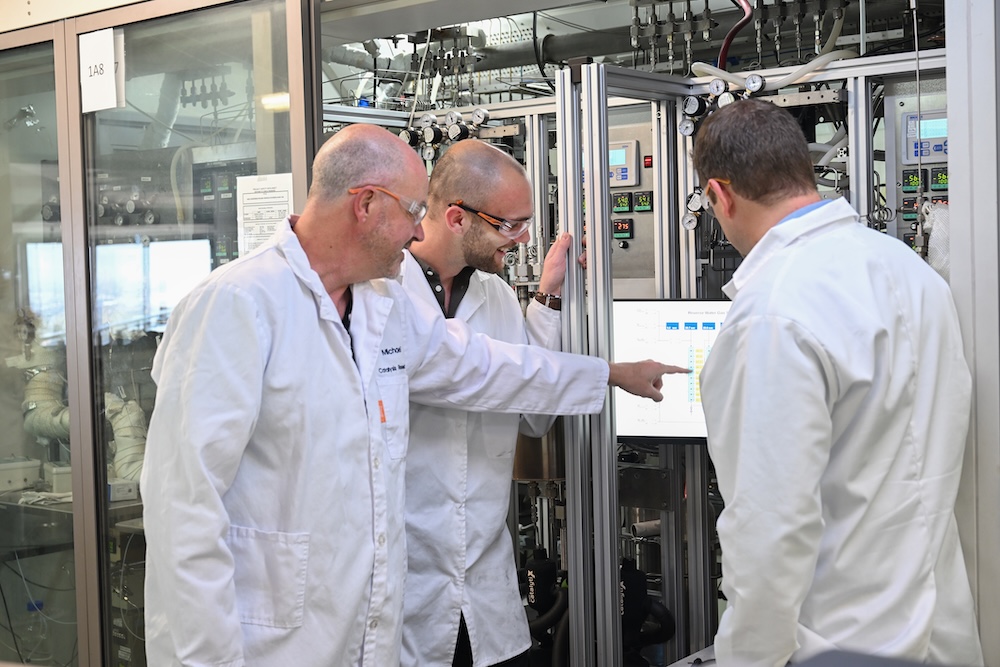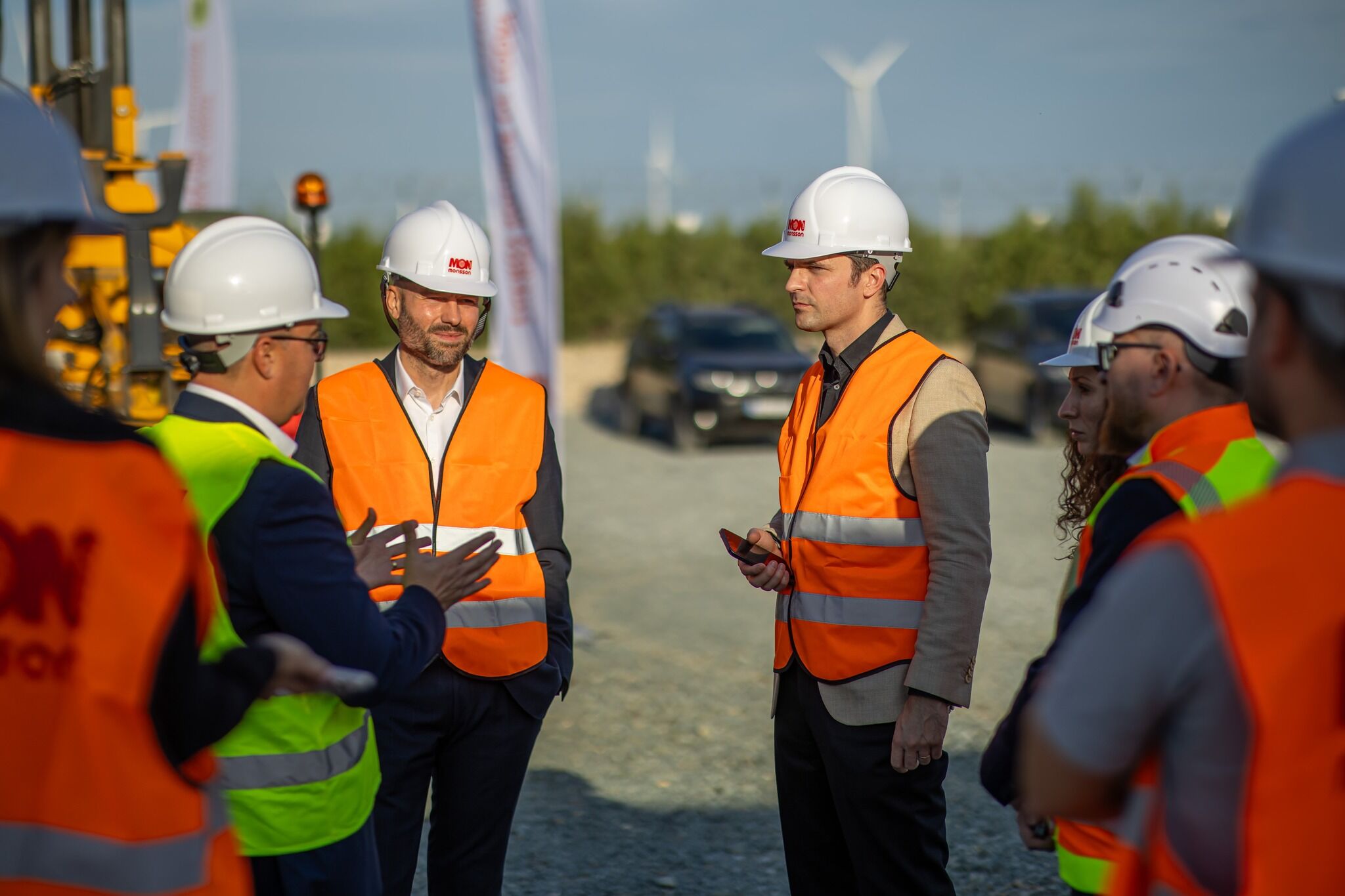Advancements in Pumped Hydropower Storage and Contribution to Sustainable Development Goals
Executive Summary: Energy Storage as a Key Enabler for SDG 7
Long-duration energy storage is critical for ensuring grid stability and facilitating the widespread adoption of intermittent renewable energy sources such as wind and solar. This transition is fundamental to achieving Sustainable Development Goal 7 (Affordable and Clean Energy) and SDG 13 (Climate Action). While conventional pumped hydropower remains the dominant form of bulk energy storage, its limitations have spurred innovation. This report details a novel offshore pumped hydro system developed by Sizable Energy, analyzing its potential to advance multiple SDGs through scalable, cost-effective energy storage.
Conventional Pumped Hydropower and its Role in Sustainable Infrastructure
Pumped hydropower storage (PHS) is a mature technology that provides essential grid-scale energy storage. It currently accounts for approximately 95% of the bulk-quantity, long-duration energy storage capacity in the United States.
- Mechanism: Water is pumped from a lower reservoir to a higher one during periods of low electricity demand or high renewable energy generation. When electricity is needed, the water is released downhill through turbines to generate power.
- Contribution to SDGs:
- SDG 7 (Affordable and Clean Energy): PHS directly supports the integration of variable renewable energy sources, ensuring a reliable and clean power supply.
- SDG 9 (Industry, Innovation, and Infrastructure): These facilities represent resilient, large-scale infrastructure assets that are vital for a modern, sustainable energy system.
- Limitations:
- Significant capital investment and long construction timelines.
- Limited opportunities for siting due to geographical and environmental constraints.
Innovation in Offshore Pumped Hydro: The Sizable Energy Model
To overcome the limitations of traditional PHS, new approaches are emerging. The Italian startup Sizable Energy has developed a patented offshore system that leverages marine environments for energy storage, aligning with several key sustainable development objectives.
System Design and Operation
- The system stores energy by pumping saturated sea salt brine, which is heavier than seawater, from a reservoir fixed on the seabed.
- The brine is moved through a connecting pipe to a floating reservoir on the ocean surface.
- The gravitational potential energy is converted back into electricity by releasing the dense brine to flow back down through reversible pumps, which act as turbines.
Alignment with Sustainable Development Goals
- SDG 9 (Industry, Innovation, and Infrastructure): The technology represents a significant innovation, creating a new class of sustainable energy infrastructure that utilizes ocean depth as a resource. It is designed for assembly through local supply chains, promoting sustainable industrialization.
- SDG 14 (Life Below Water): By operating offshore, the system offers an alternative to land-based infrastructure, potentially reducing impacts on terrestrial ecosystems. Its deployment necessitates sustainable management of marine resources.
- SDG 11 (Sustainable Cities and Communities): This solution is particularly advantageous for coastal cities, which have high energy demands but limited space for land-based renewables. It can be paired with offshore wind farms to provide clean, reliable power.
- SDG 17 (Partnerships for the Goals): The project’s progression is supported by partnerships between private enterprise (Sizable Energy), investment firms (Playground Global), and future collaborations with governments, local manufacturers, and energy providers.
Policy Context and Future Outlook for Global Goals
The successful deployment of innovative energy storage solutions is heavily influenced by national energy policies. A supportive regulatory framework is essential for attracting investment and scaling up technologies needed to meet climate and energy targets.
- Enabling Offshore Renewables: Offshore storage systems are synergistic with the expanding global offshore wind industry and emerging marine energy technologies (wave, tidal), which are recognized for their potential to provide reliable, 24/7 power.
- Accelerating Climate Action (SDG 13): The combination of offshore renewable generation and storage provides a clear pathway to decarbonize coastal regions and enable energy abundance, directly contributing to global climate action.
- Commercial Viability: Sizable Energy is advancing from sea trials to a pilot-scale facility, with plans for commercial project development in 2026. This progress indicates a viable path toward delivering long-duration energy storage at a fraction of the cost of battery alternatives, furthering the objective of **SDG 7**.
Analysis of Sustainable Development Goals in the Article
1. Which SDGs are addressed or connected to the issues highlighted in the article?
The article on pumped hydropower and energy storage solutions connects to several Sustainable Development Goals (SDGs) by focusing on the transition to renewable energy, technological innovation, and sustainable infrastructure.
- SDG 7: Affordable and Clean Energy: This is the most central SDG. The entire article discusses technologies like pumped hydropower that are crucial for storing energy from renewable sources like wind and solar, making them more reliable and accessible. It aims to ensure everyone has access to affordable, reliable, and modern energy.
- SDG 9: Industry, Innovation, and Infrastructure: The article highlights innovation in the energy sector. It describes new, resilient infrastructure solutions like Sizable Energy’s offshore pumped hydro system and the repurposing of old oil wells for energy storage. This directly relates to building resilient infrastructure and fostering innovation.
- SDG 13: Climate Action: By focusing on energy storage solutions that support the large-scale deployment of wind and solar power, the article addresses a key strategy for combating climate change. These technologies are essential for reducing reliance on fossil fuels and transitioning to a low-carbon economy.
- SDG 14: Life Below Water: The article discusses several ocean-based energy solutions, including Sizable Energy’s offshore system, which uses sea salt brine, and the emerging marine energy industry that harvests power from waves, tides, and currents. This directly involves the use of marine resources and the development of technology for marine environments.
- SDG 11: Sustainable Cities and Communities: The article explicitly mentions that “Energy-thirsty coastal cities would be a good place to start” for deploying these new offshore energy storage solutions, linking the technology directly to the energy needs of urban populations.
2. What specific targets under those SDGs can be identified based on the article’s content?
Based on the article’s discussion of renewable energy technology and policy, several specific SDG targets can be identified:
- Target 7.2: By 2030, increase substantially the share of renewable energy in the global energy mix. The article’s main theme is about enabling greater use of intermittent renewables like wind and solar through effective energy storage. Pumped hydro is described as an “ideal match for today’s utility-scale wind and solar farms.”
- Target 7.a: By 2030, enhance international cooperation to facilitate access to clean energy research and technology… and promote investment in energy infrastructure and clean energy technology. The article provides a clear example of this with the Italian startup Sizable Energy receiving an “$8 million funding round” led by a “California-based energy transition investment firm” to develop and commercialize its technology globally.
- Target 9.4: By 2030, upgrade infrastructure and retrofit industries to make them sustainable… with greater adoption of clean and environmentally sound technologies. The development of new pumped hydro systems and the innovative idea of “repurposing old oil wells for pumped storage” are direct examples of upgrading infrastructure with clean technologies.
- Target 9.5: Enhance scientific research, upgrade the technological capabilities of industrial sectors… encouraging innovation. The article is a showcase of innovation, detailing the patented offshore system by Sizable Energy, which has moved from “tank tests” to a “pilot-scale facility,” demonstrating progress in research and technological capability.
- Target 13.2: Integrate climate change measures into national policies, strategies and planning. The article directly discusses this by referencing the “sharp U-turn in federal energy policy” in the US and the “war against offshore wind,” which are examples of how national policies can either support or hinder climate action and the renewable energy transition.
- Target 14.a: Increase scientific knowledge, develop research capacity and transfer marine technology… to improve ocean health. The development of offshore energy storage and technologies that “harvest kinetic energy from waves, tides, and currents” represents an increase in scientific knowledge and the development of marine technology.
3. Are there any indicators mentioned or implied in the article that can be used to measure progress towards the identified targets?
Yes, the article contains several quantitative and qualitative indicators that can be used to measure progress:
- Share of energy storage capacity (Indicator for Target 7.2): The article states that “pumped hydro still accounts for about 95% of the bulk-quantity, long-duration energy storage capacity in the US.” This figure serves as a baseline indicator for the current state of energy storage.
- Financial investment in clean energy (Indicator for Target 7.a): The mention of a “new $8 million funding round” for Sizable Energy is a specific financial indicator of investment flowing into clean energy technology research and development.
- Technological development and deployment (Indicator for Target 9.5): Progress is indicated by the advancement of Sizable Energy’s technology through different stages: “tank tests,” “trials at sea,” a “pilot-scale facility,” and plans for a “multi-MWh demonstration plant” and “commercial project development in 2026.”
- Adoption of innovative industrial processes (Indicator for Target 9.4): The concept of “repurposing old oil wells for pumped storage” is a qualitative indicator of retrofitting existing industrial infrastructure for sustainable purposes.
- National energy policies (Indicator for Target 13.2): The article’s discussion of the US “federal energy policy,” the “war against offshore wind,” and the “American Energy Dominance” policy are qualitative indicators of how national strategies are integrating (or failing to integrate) climate change measures.
- Development of marine technologies (Indicator for Target 14.a): The emergence of the “marine energy industry” focusing on “waves, tides, and currents” is an indicator of growing research and capacity in marine technology.
4. Table of SDGs, Targets, and Indicators
| SDGs | Targets | Indicators Identified in the Article |
|---|---|---|
| SDG 7: Affordable and Clean Energy | 7.2: Increase the share of renewable energy in the global energy mix. | Pumped hydro accounting for 95% of bulk energy storage in the US, enabling more wind and solar integration. |
| SDG 7: Affordable and Clean Energy | 7.a: Promote investment in energy infrastructure and clean energy technology. | An $8 million funding round for Sizable Energy from an international investment firm. |
| SDG 9: Industry, Innovation, and Infrastructure | 9.4: Upgrade infrastructure and retrofit industries to make them sustainable. | Development of new offshore pumped hydro systems; repurposing old oil wells for energy storage. |
| SDG 9: Industry, Innovation, and Infrastructure | 9.5: Enhance scientific research and upgrade technological capabilities. | Progression of Sizable Energy’s technology from tests to a pilot-scale facility and plans for a multi-MWh demonstration plant. |
| SDG 13: Climate Action | 13.2: Integrate climate change measures into national policies and planning. | Discussion of the US “federal energy policy” and its stance on different renewable energy sources like offshore wind. |
| SDG 14: Life Below Water | 14.a: Increase scientific knowledge and transfer marine technology. | Development of offshore pumped hydro systems and the emerging marine energy industry (waves, tides, currents). |
Source: cleantechnica.com






